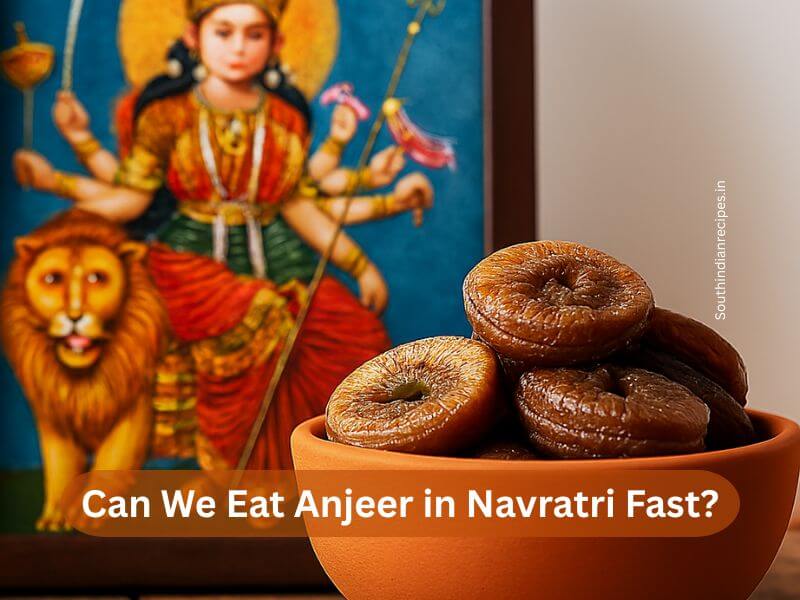Navratri — the nine nights dedicated to Goddess Durga — is a time of devotion, discipline, and sattvik living. Fasting during this period is not just a religious ritual but also a way to detoxify the body and focus the mind. Among the many vrat‑friendly foods, anjeer (figs) often sparks curiosity. Can we eat anjeer in Navratri fast? Let’s explore the answer through tradition, nutrition, and expert guidance.
Contents
While Navratri fasting food lists vary by region and family tradition, the general vrat guidelines include:
- Avoiding grains like wheat and rice (except vrat flours such as kuttu, singhara, or rajgira atta).
- Eliminating onion, garlic, and non‑vegetarian foods.
- Using sendha namak (rock salt) instead of regular salt.
- Focusing on sattvik foods — fresh fruits, milk, nuts, and certain vegetables.
Some devotees follow a phalahar diet (fruits, dry fruits, and milk only), while others include light sattvik meals once or twice a day.
Yes — in most traditions, anjeer is allowed in Navratri fast because:
- It is a natural fruit and fits into the phalahar category.
- It contains no grains, onion, garlic, or processed additives.
- It provides sustained energy and essential nutrients during fasting hours.
However, fasting customs can differ between communities, so it’s always best to follow your family’s or temple’s specific vrat guidelines.
Including anjeer in vrat diet offers multiple health benefits:
- Natural Energy Source: Rich in natural sugars for quick stamina.
- High Fiber Content: Supports digestion during dietary changes.
- Mineral Boost: Contains potassium, magnesium, calcium, and iron.
- Antioxidants: Help protect cells from oxidative stress.
- Satiety Factor: Keeps you feeling full for longer, reducing cravings.
Expert Insights
- Ayurvedic View: Anjeer is considered madhura rasa (sweet taste) and guru guna (heavy quality), which nourishes and strengthens the body during fasting.
- Nutritionist’s Advice: “Anjeer is an excellent vrat snack. Soak dried figs overnight for better digestion and nutrient absorption,” says Ritu Sharma, Clinical Nutritionist.
- Cultural Note: In many households, anjeer is included in vrat fruit platters or offered as prasad.
- Eat 2–3 soaked anjeer in the morning for energy.
- Add chopped anjeer to fruit chaat for vrat.
- Blend with milk for a fig milkshake (sweeten naturally if needed).
- Pair with almonds or walnuts for a nutrient‑dense snack.
Precautions
- Anjeer is naturally sweet — moderation is key, especially for those with diabetes.
- Choose unpitted, preservative‑free dried figs for purity.
- Avoid overconsumption as it may cause bloating in sensitive individuals.
Frequently Asked Question – (FAQs)
Ans: Yes, anjeer is vrat‑friendly and provides natural energy during fasting.
Ans: It offers instant energy, minerals, fiber, and antioxidants — ideal for fasting.
Ans: 2–3 soaked figs a day are enough to boost energy without excess calories.
Ans: Anjeer has natural sugars, so diabetics should consult their doctor before consuming.
Ans: Eat soaked, add to fruit chaat, blend into milkshakes, or pair with nuts.
Also Read: Can We Eat Dry Fruits in Navratri Fast? – A Complete Guide
Bottom Line
For most devotees, anjeer is allowed in Navratri fast and is a healthy, sattvik choice that provides energy, nutrition, and sweetness. As with all fasting foods, the key is moderation, mindfulness, and respect for tradition.







